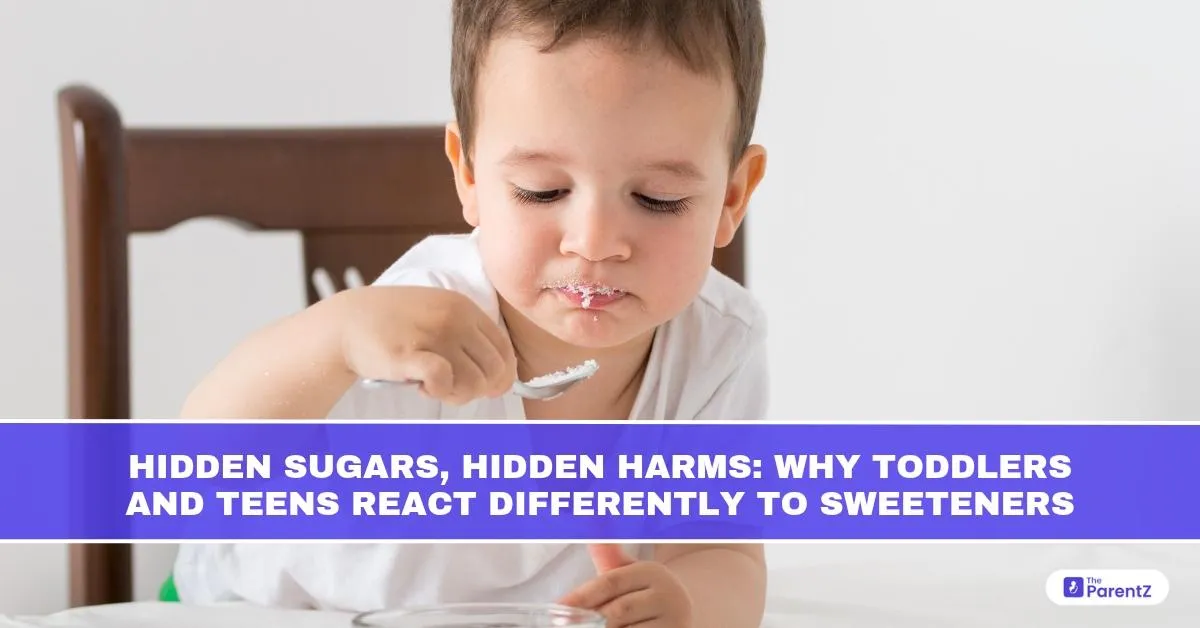Sugar Isn’t Always Obvious But Its Effects Are
It’s no secret that children love sweet foods. But what many parents don’t realise is just how early and silently sugar sneaks in, even in products labeled “healthy.” From toddler cereals to teenage energy drinks, sugar is a constant ingredient, but the way it affects children depends greatly on their age and developmental stage.
As a dental practitioner, I see this difference play out every day. A toddler with a feeding bottle full of flavored milk shows signs of early decay, while a teen sipping on cold drinks after tuition develops deep cavities hidden between molars. The sugar may be the same, but the damage unfolds differently.
Where Are These “Hidden” Sugars?
You might not see spoonfuls of sugar being added, but it’s still there:
- In “no added sugar” cookies (replaced by syrup or juice concentrate)
- In multigrain cereals that taste sweet but look healthy
- In oral syrups and tonics
- In flavored milk powders
- In protein bars, ketchup, bread, and instant noodles
Even foods marketed as fitness-friendly or “natural” often use hidden sweeteners, which are not always listed clearly. These include:
- High-fructose corn syrup
- Maltodextrin
- Invert syrup
- Fructose-glucose syrup
- Dextrose or fruit juice concentrates
Toddlers (1–3 Years): Small Body, Big Sensitivity
At this stage, the gut, kidneys, taste receptors, and teeth are still maturing.
Why Sugar Is Riskier at This Age:
- Immature digestion: Toddlers don’t efficiently process large amounts of fructose or sucrose. Sugar overload can lead to gas, bloating, and disturbed sleep.
- Early taste imprinting: Frequent sweet exposure trains toddlers to reject non-sweet foods (like vegetables).
- Bottle decay risk: Sweet liquids like flavoured milk or fruit juices, especially when given in bottles, stick to the front teeth and lead to early childhood caries.
- Slower salivary flow: Saliva protects the teeth, but toddlers produce less of it, making them more prone to acid attacks after sugar intake.
I often see toddlers with 6–8 upper front teeth decayed before age 3, not because of chocolates, but because of “healthy” sweet milk and snacks given multiple times a day.
Preschoolers and Primary School Kids (4–10 Years): Sweet Becomes a Habit
As children grow, their exposure to social events, ads, and peer choices increases. At this stage:
- Sugar becomes a daily expectation after meals, during snacks, and in birthday treats.
- They may begin choosing sugar over meals, especially when sweet options are accessible.
- Early signs of plaque buildup, enamel thinning, and occasional tooth pain begin to appear.
Hidden sugars in biscuits, energy drinks, tiffin snacks, and flavored curds are common culprits.
Dental checks often reveal cavities between the molars at this age, sometimes missed by parents until the child complains of pain.
Teens (11–16 Years): The Silent Sugar Storm
Teens tend to eat more independently, buying snacks, skipping meals, or staying up late with sugary drinks. While their teeth look “permanent,” they are still maturing, especially the molars and enamel.
How Sugar Affects Teens Differently:
- Deeper decay: Permanent teeth are more prone to interproximal decay (between teeth), especially if oral hygiene is poor.
- Acidic drinks + sugar = double trouble: Aerated beverages, even if sugar-free, soften enamel. When combined with sugar, the erosion is faster and deeper.
- Gum inflammation: Teens with high sugar intake often show signs of early gingivitis due to sticky plaque and hormonal changes.
- Metabolic issues: Excess sugar in this phase can affect insulin sensitivity, concentration, and sleep, especially in girls experiencing early signs of PCOS.
Teen patients frequently underestimate the damage. A cold drink every day may seem normal, but over time, the enamel damage and gum swelling become hard to reverse.
Sugar Reacts with Age, Not Just Teeth
Let’s compare how the same sugary food affects two age groups differently:
| Factor | Toddler (1–3 yrs) | Teen (13–16 yrs) |
| Teeth | Soft, vulnerable primary teeth | Permanent teeth, stronger but prone to deep decay |
| Saliva | Less flow, poor buffering | More saliva, but often poor hygiene |
| Taste Preference | Easily conditioned | Harder to unlearn preferences |
| Gut Tolerance | Low enzyme activity | Better digestion, but risk of insulin spikes |
| Awareness | Doesn’t understand consequences | May ignore early symptoms |
How Much Sugar Is Too Much?
According to WHO and Indian pediatric guidelines:
- Toddlers: No more than 15–20g/day (about 4 tsp)
- Children 4–10: Up to 25g/day
- Teens: Not more than 30g/day
But a single flavored yogurt or juice box can contain 18–22g, meaning one product may use up the full day’s allowance.
A Dentist’s Advice to Parents
“Parents often say, ‘My child barely eats sweets.’ But when I go over the diet, we find 5–6 hidden sources of sugar daily. A flavored biscuit here, a health tonic there, ketchup with lunch and slowly, the damage begins.”
Here’s how to prevent that:
- Look beyond the label. “No added sugar” doesn’t always mean low sugar.
- Avoid sweet milk mixes and instead flavor with cardamom, dates, or fruit.
- Don’t reward with sweets. It teaches emotional eating.
- Encourage water and plain milk as default drinks.
- Brush after sugary meals, especially at night.
- Make oral checks a routine. Catch issues early before they become painful.
Final Thoughts: Sweetness Can Wait
Sugar isn’t inherently evil. But when it comes too early, too often, and in hidden forms, it shapes a lifetime of cravings, health struggles, and dental problems. Toddlers need protection. Teens need guidance.
What they eat today doesn’t just affect their smile; it affects how they feel, focus, and grow tomorrow.









Be the first one to comment on this story.